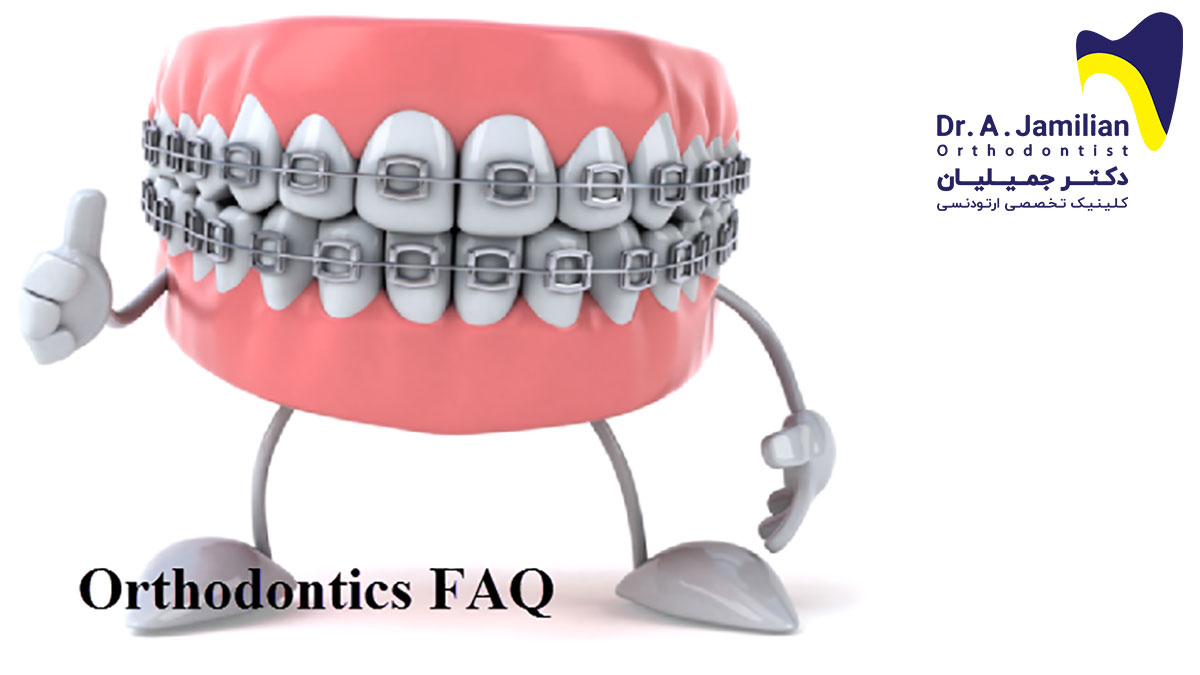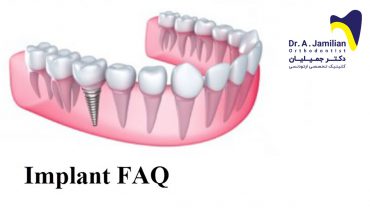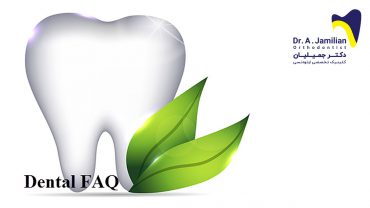1. What is Orthodontics?
Orthodontics is a branch of dentistry that is specialized in correcting the malocclusion and dentofacial malocclusion. The main tasks of orthodontics are diagnosing, preventing, and treating the dentofacial malocclusions.
2. What is the Best Age for Orthodontics?
The appropriate age for orthodontics treatment depends on the type of malocclusion but the patient is required to visit an orthodontist once before the age of 7 so that they could start the treatment if needed. Treatment in early ages could be carried out easier and the result will be more successful.
3. What is the Orthodontics Appliance & How Does It Work?
The orthodontics appliances are divided into two groups:
Removable appliance (figure 1), fixed appliance (figure 2).
A removable appliance is an appliance that the patient could take out and put back in the mouth without the need for the help of the orthodontist.
The fixed appliance is an appliance that the patient could not put in the mouth and it should be placed in the patient’s mouth by an orthodontist.
Depending on the type of malocclusion, removable or fixed appliances could be used.
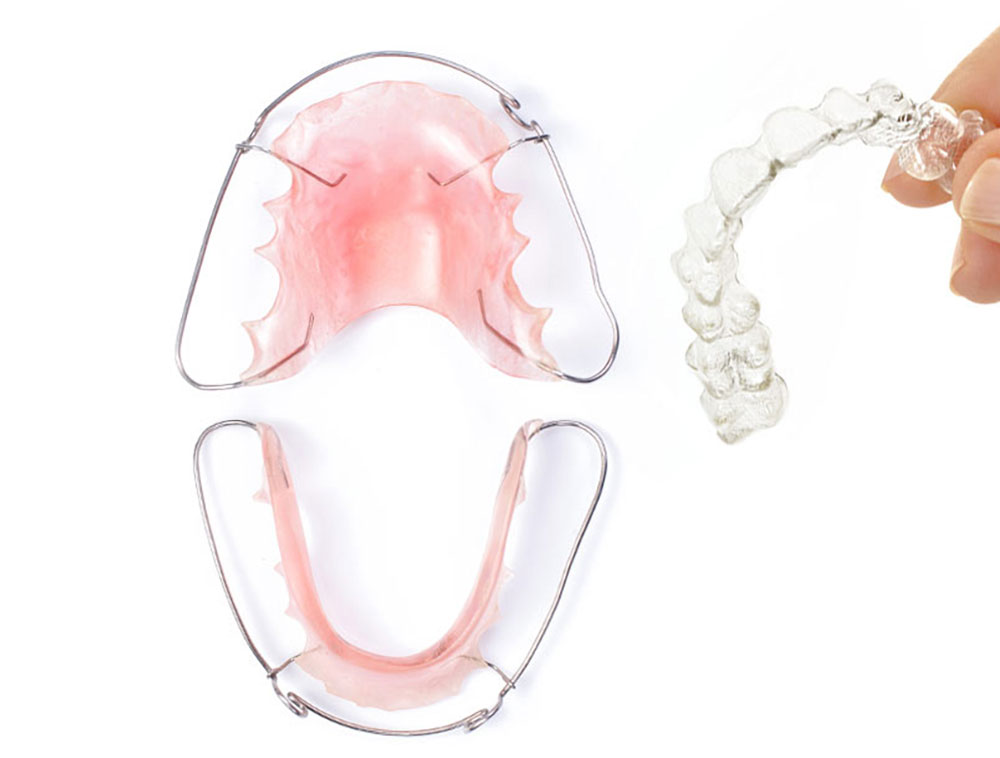
4. Is It Late to Start the Treatment?
Orthodontics appliances are not only used for children, but they could be used at any age on the contingent of having healthy gums and teeth.
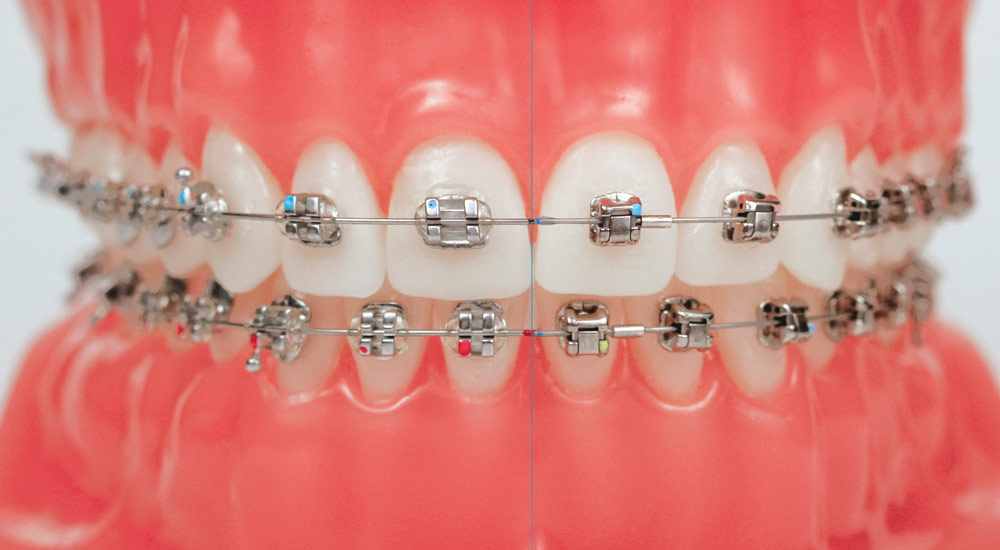
5. How Long Is the Duration of Orthodontics Treatment?
Treatment duration depends on the type and severity of the dentofacial malocclusion together with the patient’s age and cooperation, however, the length of orthodontics treatment approximately amounts to 2 years and the patient should be examined every 4 to 6 weeks.
6. Do Orthodontics Hurt?
During the first week after placement of wires, the patient might feel a little pain. After a few days, the pain will subside automatically. In case appliances cause gum, teeth, and cheek to inflame. The physician prescribes a special dental wax for fixing the above problem.
Sometimes the patient could use simple painkillers like Acetaminophen to subside the pain.
7. What Types of Food Should be Consumed During the Orthodontics Treatment?
Avoid sticky candies and gums, Gaz, Sohan, Scorched rice (Tah Dig), and baguette.
Slice the food and fruit into small pieces and put them on posterior teeth.
Avoid biting food, fruit, pizza, sandwich, dry or toasted bread, apple, cucumber, and corn, with your front and lower teeth.
Read the rest of the answer at the Diet with Orthodontics Article.
8. How to Practice Oral Hygiene during Orthodontics Treatment?
- Brush your teeth at least for 5 minutes after each meal.
- Don’t use a hard-bristled toothbrush.
- Place the toothbrush against the upper jaw and move downward from the top of the gum and move upward in the lower jaw. Do not forget the chewing surfaces and behind the teeth.
- Please, make sure to brush surfaces of all teeth, interdental spaces and over orthodontics appliances.
- Salt-water-gargle is good for washing the mouth and massaging the gums.
9. Can You Do Sports With Orthodontics?
Yes, we use a Mouthguard during all types of sports.
10. Is Teeth Extraction Necessary?
Sometimes teeth extraction is necessary in order to make more space on the jaw to reduce protrusion of teeth or teeth crowding. When the tooth is extracted the empty place will be filled later.
11. What Type of Problems is Treated by the Orthodontics?
They are not just for straightening the crowded teeth but the orthodontics treatments are performed to improve the relations between teeth and 2 jaws. If the relations between upper and lower teeth are not corrected, it could have a negative impact on eating, chewing, and speaking.
Read the rest of the answer to this question at the Article titles Reasons for the Orthodontics Problems.
12. What is the Best Age for Orthodontics Treatment?
The age depends on the type of malocclusion but orthodontics could be carried out at any age. If the patient is younger, the treatment is easier, shorter, and more successful. Type of malocclusion is important in determining the duration of the course of treatment.
Read the rest of the answer in the Article titled the Appropriate Age for Orthodontics.
13. What are the Advantages of Different Types of Orthodontics Treatment?
Orthodontics treatments are classified under 2 groups: One group of orthodontics treatment for correcting teeth and another group for treatment of jaw malocclusion, each of which requires a specific device for treatment of malocclusion.
The rest of the answer at Article titled the Orthodontics. Read
14. What Is Your Advice for Patients Who Have both Orthodontics and Nose Surgery at the Same Time?
The patient must carry out orthodontics treatment first and then nose surgery. Otherwise, nose surgery will not be successful because nose surgery is carried out with respect to the jaw structure and taking into account that orthodontics changes the shape of the jaw, it might affect the shape of the nose as well.
15. What Problems Might One Person Face If They are Late for Orthodontics Treatment?
In case of failure to treat jaw problems in time, the problems will become severe and the patient might need teeth extraction or surgery.
16. What Is Dental Plaque?
Plaque is a sticky layer created on the teeth as the result of the activity of bacteria and could cause problems for teeth health. The place of plaque aggregation is mostly the unreachable locations on the posterior teeth and interdental spaces. If the bacterial plaque remains on the teeth, it will become firmer and it will turn into germ. This phenomenon makes brushing and flossing harder and finally results in gum disease.
17. How Does Gum Enamel Loss Occur?
Although enamel has a strong structure, it could be worn down due to abrasion, erosion, and abfraction, as a result, its color will change, it will become more sensitive and finally will result in a toothache.
18. What Is Tooth Sensitivity?
Tooth sensitivity occurs when there is a space between gums and teeth or by gum tissue recession and when the tooth root under gum margin is visible.
19. What is Tooth Decay?
Acidic materials wear out the hard layer of the tooth called enamel and cause tooth decay.If the enamel is removed or decayed and the dentin is exposed, the tooth will be in a position where we will feel pain.
20.How is enamel color created?
There are a variety of factors, such as aging, genetic and hereditary causes, certain diseases, taking certain medications and some mouthwashes, poor oral hygiene, damage to teeth, colored foods and drinks, and smoking. They can stain the enamel and change the color of the teeth.
21. What Results in Gum Problems?
Microbial plaque aggregated on teeth and gum produces acid and toxic materials, which makes gums go red, bleed and inflame. Therefore, in order to protect the health of the gums during orthodontics, care about complete oral hygiene.
22. What Causes Bad Breath?
Bad breath is the result of the development of some bacteria that live on a [person’s tongue or due to poor oral and dental hygiene.
